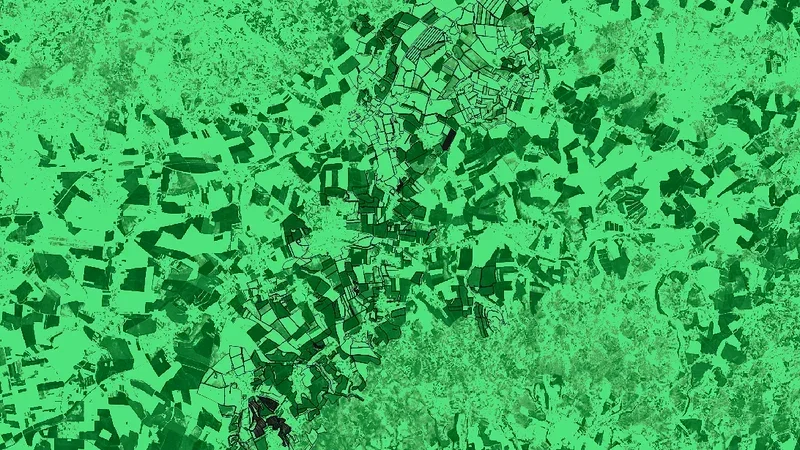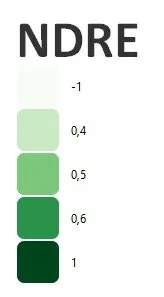Normalized Difference Red Edge Index (NDRE)

Reading time
Content


NDRE, which stands for Normalized Difference Red Edge Index, is a specific type of vegetation index that measures the chlorophyll content of plant leaves. This index is particularly useful for monitoring mature vegetation and plants that are close to harvest.
The NDRE uses NIR (near infrared) and RedEdge (red edge) wavelengths. Its values range from -1 to +1 and can be interpreted as follows:
- -1 to 0.2: Indicates bare soil or crops in the early stages of growth.
- 0.2 to 0.6: Indicates unhealthy or immature plants.
- 0.6 to 1: Represents healthy, mature or growing plants.
Low NDRE values can indicate a variety of crop problems such as damage, disease, pests, or nutrient deficiencies.
The formula for calculating NDRE is as follows: NDRE=(NIR-RedEdge)/(NIR+RedEdge)
Where for Sentinel-2 data: NDRE=(B7-B5)/(B7+B5)
B7 corresponds to the near-infrared reflectance (VNIR) of 783 nm and B5 corresponds to the red edge (RedEdge) of 705 nm.
